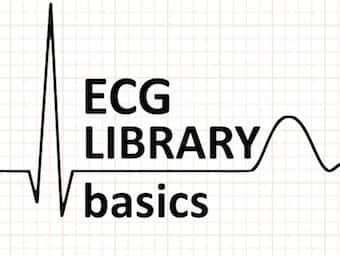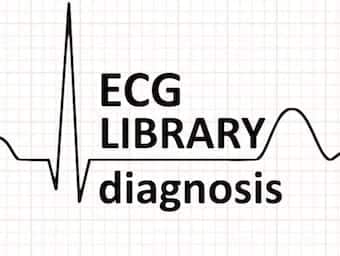
Delta Wave
The characteristic ECG findings in the Wolff-Parkinson-White syndrome include a slurred upstroke to the QRS complex (the Delta wave)

The characteristic ECG findings in the Wolff-Parkinson-White syndrome include a slurred upstroke to the QRS complex (the Delta wave)

The U wave is a small (0.5 mm) deflection immediately following the T wave, usually in the same direction as the T wave. Best seen leads V2 and V3.

On this page we will discuss and provide examples of R wave abnormalities such as Dominant R wave in V1, aVr and PRWP LITFL ECG Library

Q Wave morphology and interpretation. A Q wave is any negative deflection that precedes an R wave. LITFL ECG Library

Overview of normal P wave features, as well as characteristic abnormalities including atrial enlargement and ectopic atrial rhythms

ECG exam template with headings and prompts which can be used as template for ECG-based exam questions, such as the FACEM FRCEM OSCE

Guide to ECG rhythm analysis. The rhythm is best analysed by looking at a rhythm strip. This is a 7 step approach to ECG rhythm analysis

ST elevation primarily localised to leads I and aVL, usually associated with reciprocal ST depression and T wave inversion in inferior leads

Brugada Syndrome - ECG abnormality with a high incidence of sudden death in patients with structurally normal hearts. Brugada - EKG Library

Brugada Syndrome is an ECG abnormality (Brugada sign) in association with specific clinical findings

Worked examples of the three main methods to calculate ECG rate, along with an explanation of paper speeds and relevant clinical applications

Ashman phenomenon (1947) aberrant ventricular conduction, usually of RBBB morphology, which follows a short RR interval and preceeded by a relatively prolonged RR interval.